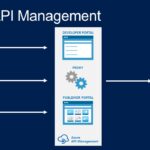As the world emerges from the pandemic, there’s a noticeable increase in employee sick days. This article explores how employers are adapting to this shift in workforce dynamics.
The Changing Landscape of Sick Days
The Post-Pandemic Scenario
With the ongoing impact of the pandemic, employees are taking more sick days than before, contributing to a shift in the workplace dynamic.
Employee Well-being
Increased sick days reflect employees’ prioritization of their health and well-being. Employers must respond accordingly.
Employer Strategies
Remote Work Policies
Many employers have embraced remote work policies, allowing sick employees to work from home, reducing the need for sick leave.
Flexible Scheduling
Flexible scheduling options enable employees to balance their health needs with work responsibilities, reducing the impact of sick days.
Paid Sick Leave
Expanding Benefits
Employers are expanding paid sick leave benefits to support employees during illness, promoting a healthier workplace.
Encouraging Rest
By offering paid sick leave, employers encourage employees to take the time they need to recover fully.
Health and Wellness Programs
Proactive Measures
Some employers are implementing health and wellness programs, proactively addressing employee well-being and reducing the likelihood of sick days.
Preventive Care
Health programs often focus on preventive care, minimizing the risk of illness and reducing absenteeism.
Employee Support
Mental Health Resources
Providing mental health resources helps employees address stress and mental health concerns, reducing sick days due to related issues.
Open Communication
Encouraging open communication allows employees to discuss their health needs and work together with employers to find suitable solutions.
Conclusion
The increase in employee sick days post-pandemic calls for adaptable employer responses. Embracing remote work, offering flexible scheduling, expanding paid sick leave benefits, implementing health and wellness programs, and providing support for employee well-being are key strategies. As the workforce evolves, employers must prioritize employee health to maintain a productive and resilient workplace.









